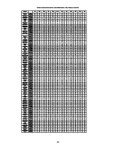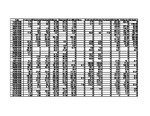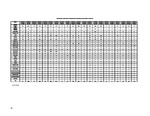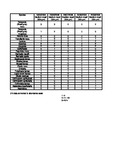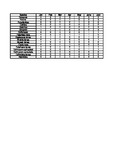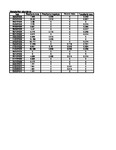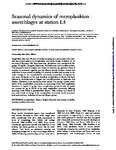An analysis of the meroplankton assemblages of Station L4 and the development and application of molecular techniques to aid taxonomic resolution.
| dc.contributor.supervisor | Attrill, Martin | |
| dc.contributor.author | Highfield, James | |
| dc.contributor.other | School of Biological and Marine Sciences | en_US |
| dc.date.accessioned | 2012-08-30T09:21:08Z | |
| dc.date.available | 2012-08-30T09:21:08Z | |
| dc.date.issued | 2012 | |
| dc.date.issued | 2012 | |
| dc.identifier | 701696 | en_US |
| dc.identifier.uri | http://hdl.handle.net/10026.1/1171 | |
| dc.description.abstract |
ABSTRACT Zooplankton data from the 1988-2007 Station L4 time-series were used to determine inter-and intra-annual patterns of meroplankton community change at Station L4, Plymouth, UK. Abundances were calculated for five groups: Cirripedia, Decapoda, Polychaeta, Echinodermata and Bivalvia. Analyses showed that, while there is some annual variability, seasonal variation accounts for the major changes in the meroplanktonic community composition throughout the time-series. Cirripedia were the only group to show any significant change in abundance over the time-series. Further sampling at the study site produced data at a finer taxonomic resolution allowing for the analyses of the seasonal cycles of abundance of previously unresolved families and genera from the 1988-2007 time-series. A similar pattern was shown to that seen in the earlier time-series with no evidence of major changes in the meroplanktonic community being found. Comparison with historical data taken from Lebour (1947) showed little evidence of major variation in meroplanktonic species composition. The limitations of traditional methods of taxonomic resolution were highlighted during these analyses and led to the investigation of molecular techniques as a viable aid to identification. Bivalve larval samples were identified to species in many cases using PCR and sequencing reactions focussing on the 18S rRNA gene. Larvae of Phaxas pellucidus were shown to be the most common, and further analysis revealed the presence of two groups of species within the data over the time sampled, comprising the larvae of several hard-substrata species. Development of an RFLP technique focussing on the mtCOI gene, allowed for the successful discrimination of porcellanid larvae to species that were unable to be resolved morphologically. Long-term data-sets play an important role in revealing the long-term patterns of community composition and abundance of meroplanktonic larvae and should be continued to identify those patterns not evident over the time-period studied. Molecular techniques were valuable in aiding the taxonomic resolution of meroplanktonic larvae, allowing previously unknown patterns of species diversity and richness to be ascertained. | en_US |
| dc.language.iso | en | en_US |
| dc.publisher | University of Plymouth | en_US |
| dc.subject | Meroplankton | en_US |
| dc.subject | Zooplankton | en_US |
| dc.subject | Station L4 | en_US |
| dc.subject | Seasonal Variation | en_US |
| dc.subject | Marine Biology | en_US |
| dc.title | An analysis of the meroplankton assemblages of Station L4 and the development and application of molecular techniques to aid taxonomic resolution. | en_US |
| dc.type | Thesis | |
| plymouth.version | Full version | en_US |
| dc.identifier.doi | http://dx.doi.org/10.24382/3260 |
Files in this item
This item appears in the following Collection(s)
-
01 Research Theses Main Collection
Research Theses Main



